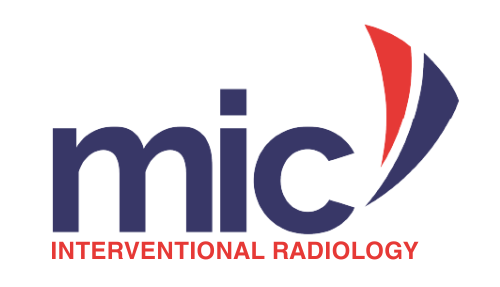Uterine Fibroid Embolisation (UFE)
Fibroid tumours are common in women and can cause heavy menstrual bleeding, pain and pressure on the bladder or bowel. Uterine fibroid embolisation is a procedure that blocks blood flow to fibroids in the uterus causing them to shrink and soften. It is an effective alternative to an operation.
Your gynaecologist will have told you about the fibroids and discussed treatment options with you. The vast majority of women are pleased with the results, reporting a significant improvement in their quality of life. Most fibroids shrink to about half their size in year 1, resulting in significant improvement in both heavy prolonged periods and pain.
Fallopian Tube Recanalisation (FTR)
Fallopian tubes are a crucial part of the female reproductive system and female fertility. The fallopian tubes transport the eggs from the ovaries to the uterus, which is where conception occurs.
A common cause of infertility is due to blocked fallopian tubes. The fallopian tubes may become blocked for a number of reasons including infection, sexually transmitted disease, uterine fibroids and scarring after a surgery.
Historical treatment methods for blocked fallopian tubes have included open abdominal surgery and laparoscopy. There is now a minimally invasive procedure called fallopian tube recanalisation.
PercutaneousNephrostomy
A nephrostomy is a procedure in which a fine plastic tube (catheter) is placed through the skin (percutaneous) into your kidney to drain your urine. The urine will be collected in an attached drainage bag. The most common reason for having a nephrostomy is a blockage of the ureter.
The urine from a normal kidney drains through a narrow muscular tube (ureter) into the bladder. When the ureter becomes blocked the kidney rapidly becomes affected especially if there is infection present. The nephrostomy drainage will relieve the symptom of blockage and keep the kidney working.
The urologist in charge of your care and the radiologist performing the procedure will make the decision to carry out the procedure if they feel that this is the best option
Ultrasound Guided Biopsy
An ultrasound guided biopsy is a procedure where a special needle is inserted into the area of abnormality to take a small sample of tissue from the organ. The sample is then sent to a laboratory for testing to determine the presence or absence of cancer.
Other tests that you have already had performed, such as an ultrasound or computed tomography (CT) scan, will have shown that there is an area of abnormal tissue inside your body. From the scans, it is not always possible to say exactly what the abnormality is due to, and the simplest way to find out is by taking a tiny sample to look at under a microscope so as to provide an accurate diagnosis and treatment plan.
Venous Port Insertion
This is when a sterile, thin plastic tube (catheter) is placed into a big vein. The inserted catheter will allow for blood to be drawn from your body or intravenous medication delivered to your blood stream over an extended period of time. Once the port has been placed, the patient is spared the stress of repeated cannula insertions and this will provide a painless way of drawing blood or delivering medication. The port is inserted in front of the chest and runs all the way to the central vein to your heart. This can stay in for several weeks, months or a year. Before the procedure is done, the consultant in charge of your care and the radiologist performing the procedure will have discussed your case and felt that this is the best option. The procedure is normally very safe and will almost certainly result in a great improvement in your medical condition.
CT Guided Biopsy
CT guided biopsies play the same role as ultrasound guided biopsies of taking a small tissue sample of an organ to determine the absence of cancer. The needle is guided while being viewed by the radiologist on a CT scan. They are however generally less common than US guided biopsies and are used for organs such as lungs and bones.
Other tests that you have already had performed, such as an ultrasound or computed tomography (CT) scan, will have shown that there is an area of abnormal tissue inside your body. From the scans, it is not always possible to say exactly what the abnormality is due to, and the simplest way to find out is by taking a tiny sample to look at under a microscope so as to provide an accurate diagnosis and treatment plan.
Interested in our services?


